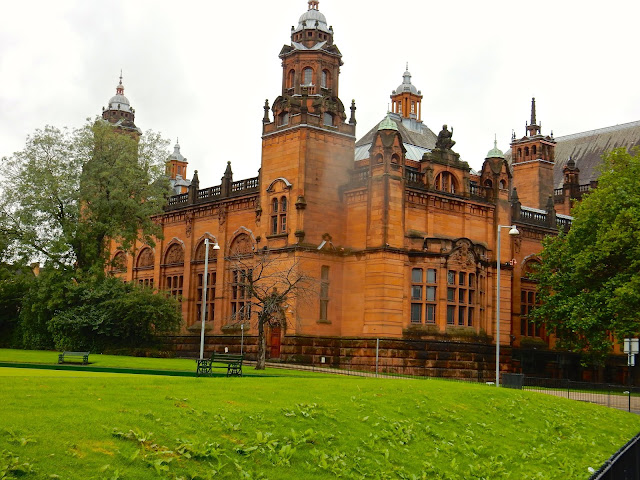A highlight of Glasgow is the magnificent Kelvingrove Art Gallery and Museum in the West End on the banks of the Kelvin River and bounded by a beautiful park.
My friend Frank, a frequent visitor, said not to miss it, if only because of the architecture.
It was built from 1888 to 1901 and is near the University of Glasgow.
The center piece of the Centre Hall is the concert pipe organ.
The building reverberates when the organ master is at the keyboard.
The Kelvingrove is an apt mixture of art, artifacts, taxidermy and oddities.
When viewing the battle ribbons it struck me how frequently and how far flung brave Scots were sent to battle by the King or Queen of England.
A fine cafe afforded an ideal place for a cup of tea, a snack and place to watch the verdant green, get greener.
Admission to this Art Gallery and Museum is free, as are most museums in Scotland.
Ireland is on the horizon. Stay tuned.
See you down the trail.





























































